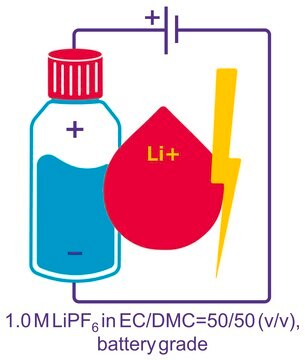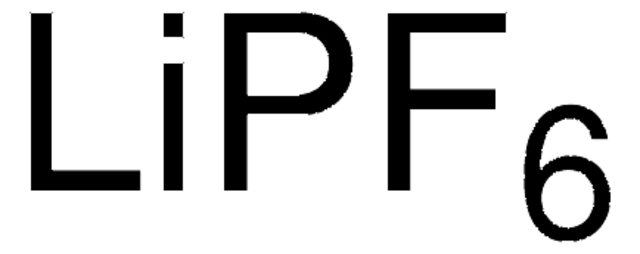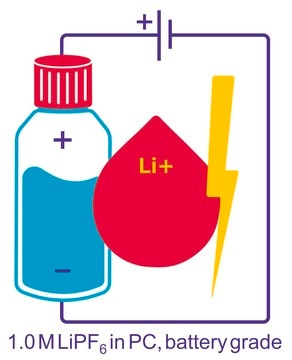320080
Lithium
ribbon, thickness × W 0.75 mm × 19 mm, 99.9% trace metals basis
Synonym(e):
Lithium foil
About This Item
Empfohlene Produkte
Qualitätsniveau
Assay
99.9% trace metals basis
Form
ribbon
Eignung der Reaktion
reagent type: reductant
Grünere Alternativprodukt-Eigenschaften
Design for Energy Efficiency
Learn more about the Principles of Green Chemistry.
sustainability
Greener Alternative Product
Widerstandsfähigkeit
9.446 μΩ-cm, 20°C
Dicke × B
0.75 mm × 19 mm
bp
1342 °C (lit.)
mp (Schmelzpunkt)
180 °C (lit.)
Dichte
0.534 g/mL at 25 °C (lit.)
Anwendung(en)
battery manufacturing
Grünere Alternativprodukt-Kategorie
, Enabling
SMILES String
[Li]
InChI
1S/Li
InChIKey
WHXSMMKQMYFTQS-UHFFFAOYSA-N
Suchen Sie nach ähnlichen Produkten? Aufrufen Leitfaden zum Produktvergleich
Allgemeine Beschreibung
Anwendung
Eignung
Signalwort
Danger
H-Sätze
Gefahreneinstufungen
Skin Corr. 1B - Water-react 1
Zusätzliche Gefahrenhinweise
WGK
WGK 1
Flammpunkt (°F)
Not applicable
Flammpunkt (°C)
Not applicable
Persönliche Schutzausrüstung
Eyeshields, Faceshields, Gloves, type P3 (EN 143) respirator cartridges
Analysenzertifikate (COA)
Suchen Sie nach Analysenzertifikate (COA), indem Sie die Lot-/Chargennummer des Produkts eingeben. Lot- und Chargennummern sind auf dem Produktetikett hinter den Wörtern ‘Lot’ oder ‘Batch’ (Lot oder Charge) zu finden.
Besitzen Sie dieses Produkt bereits?
In der Dokumentenbibliothek finden Sie die Dokumentation zu den Produkten, die Sie kürzlich erworben haben.
Kunden haben sich ebenfalls angesehen
Artikel
Professor Qiao’s laboratory lays out recent advances in conversion type lithium metal fluoride batteries. This review explores key concepts in developing electrochemically stable microstructures for wide Li-ion insertion channels.
Discover more about advancements being made to improve energy density of lithium ion battery materials.
Lithium-ion batteries (LIBs) have been widely adopted as the most promising portable energy source in electronic devices because of their high working voltage, high energy density, and good cyclic performance.
The critical technical challenges associated with the commercialization of electric vehicle batteries include cost, performance, abuse tolerance, and lifespan.
Unser Team von Wissenschaftlern verfügt über Erfahrung in allen Forschungsbereichen einschließlich Life Science, Materialwissenschaften, chemischer Synthese, Chromatographie, Analytik und vielen mehr..
Setzen Sie sich mit dem technischen Dienst in Verbindung.





